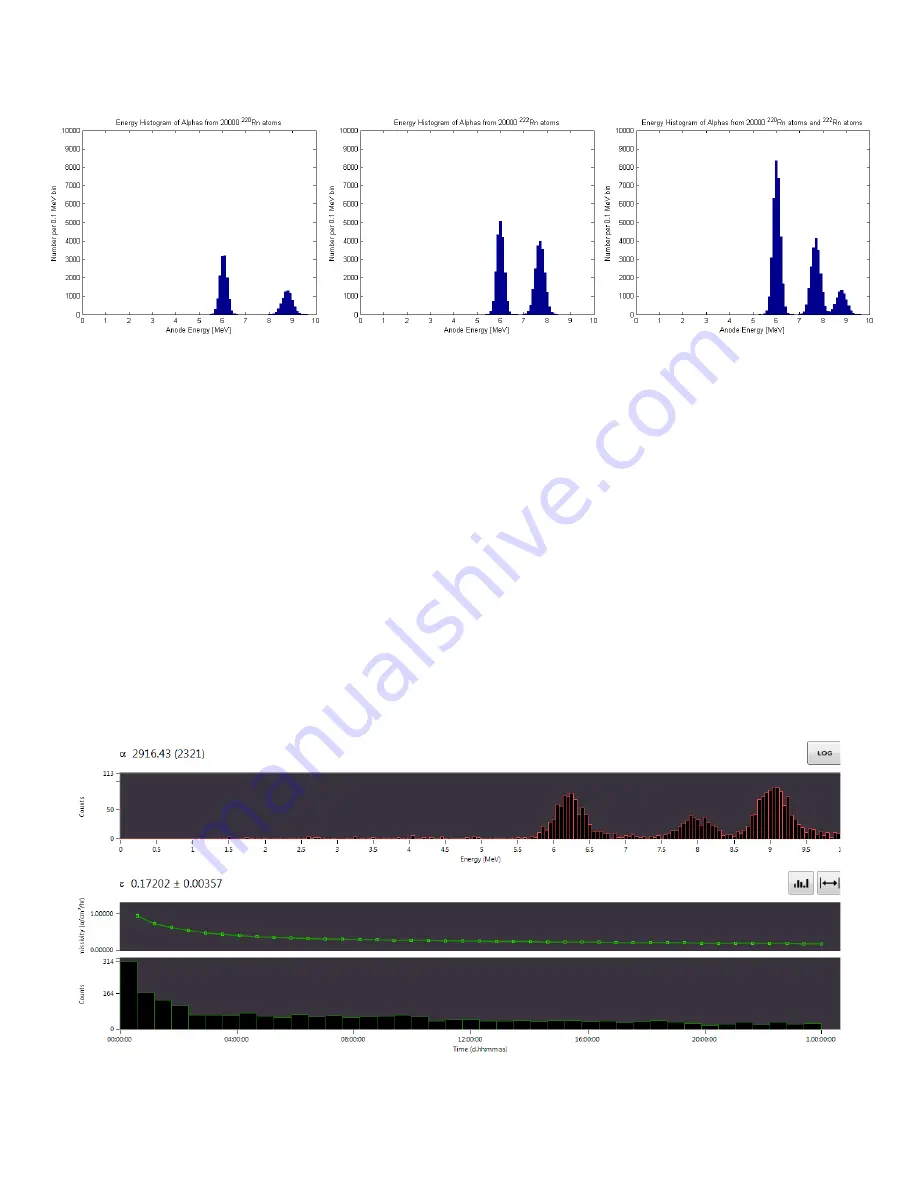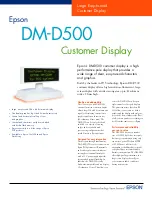
UltraLo-1800 Alpha Particle Counter
XIA LLC
Page 20
near a sample and contaminating it with its daughter isotopes prior to insertion of the sample into the
Ultra-Lo, which “terminates” the exposure. The two cases can be distinguished with relative ease, since
all of radon’s daughters are either short-lived or very long-lived. If the exposure was terminated prior to
inserting the sample in the counter (case 2) there will be a distinctive drop in the emissivity through the
run (see Figure II-12). In contrast, in the ongoing exposure case no such drop will occur. Exposure prior
to measurement can be easily dealt with by simply waiting for the isotopes to decay (which takes a few
hours for
222
Rn and several days for
220
Rn). However, the problem of radon in the active volume has no
easy fix.
How does radon get into the active volume? There are many possible sources of exposure, including
the reservoir of counting gas, the tubing leading the gas into the counter, diffusion in through the
counter walls, or generation from minute
232
Th/
238
U contamination in the materials of the counter.
Figure II-11: Simulated spectra from radon as they appear in the UltraLo-1800 based on the terminated exposure case. Given the purge time and
measurement windows, some peaks aren’t apparent.
220
Rn (left) has small peaks at 6 and 8.6 MeV. These are small because of the split decay of
212
Bi. The other decays in the chain are too fast to see through a purge.
222
Rn (middle) has similarly-sized peaks at 6 and 7.7 MeV. As before, some
peaks are not visible because of the purge, but additionally
210
Po is not shown because of the long half-life of
210
Pb. A peak at 5 MeV is a giveaway
for
210
Pb contamination in a sample, but that is a separate problem. Finally, there’s a combined spectrum (right).
Figure II-12: A run with significant terminated radon exposure. Note the similarities to the simulated combined spectrum above.
















































